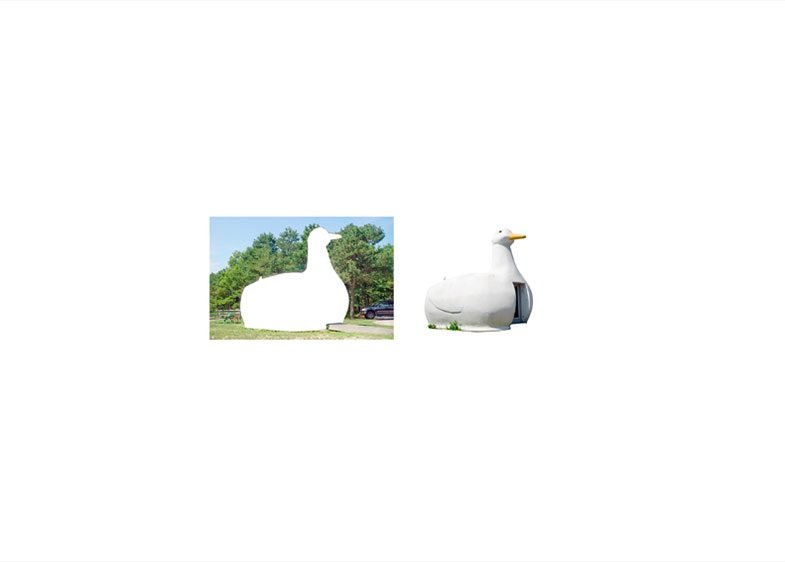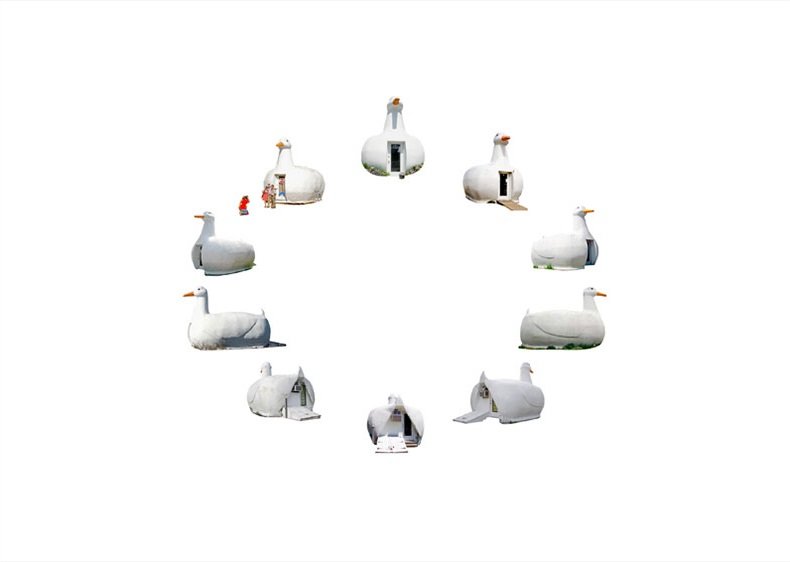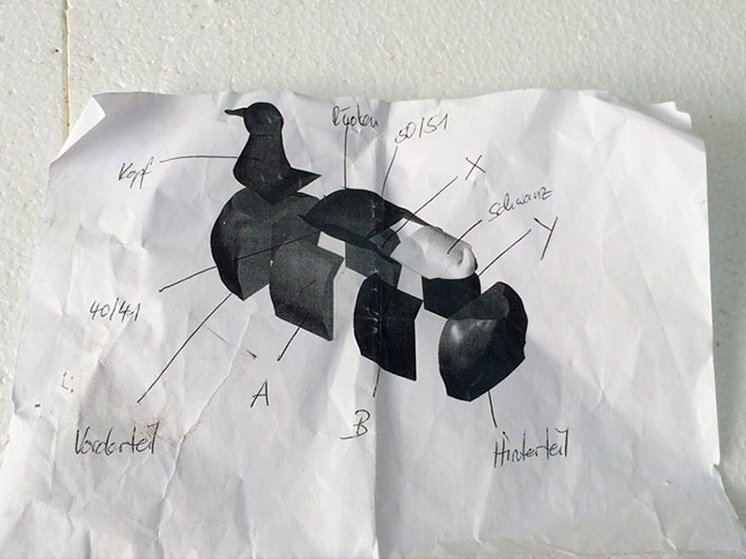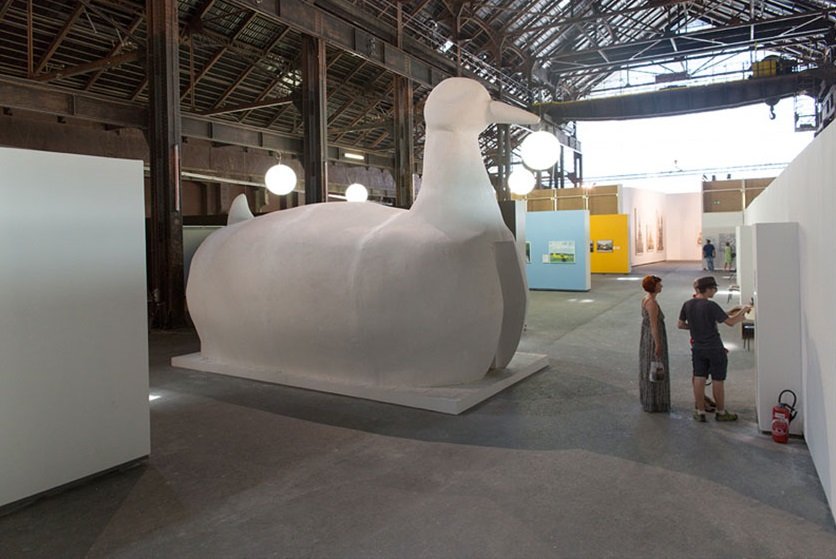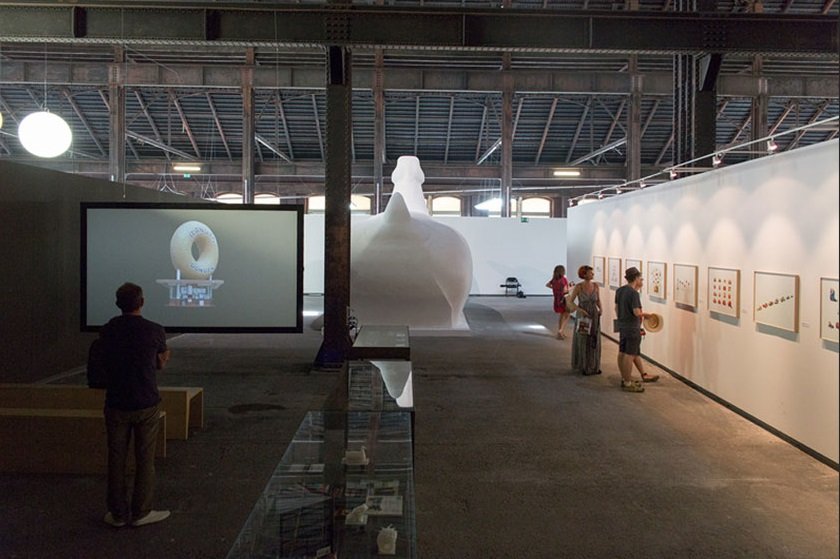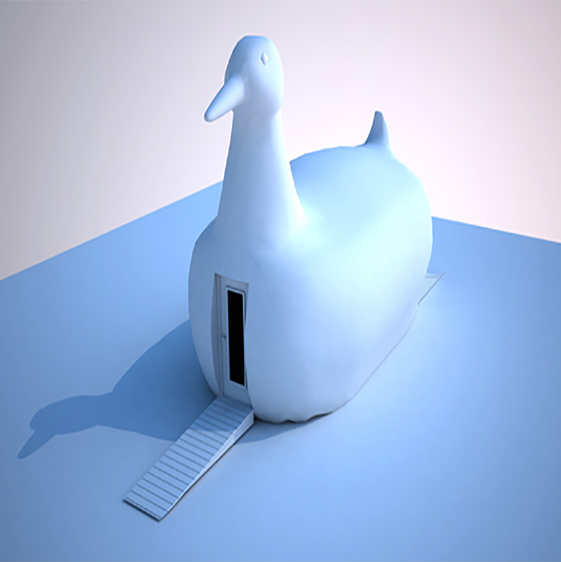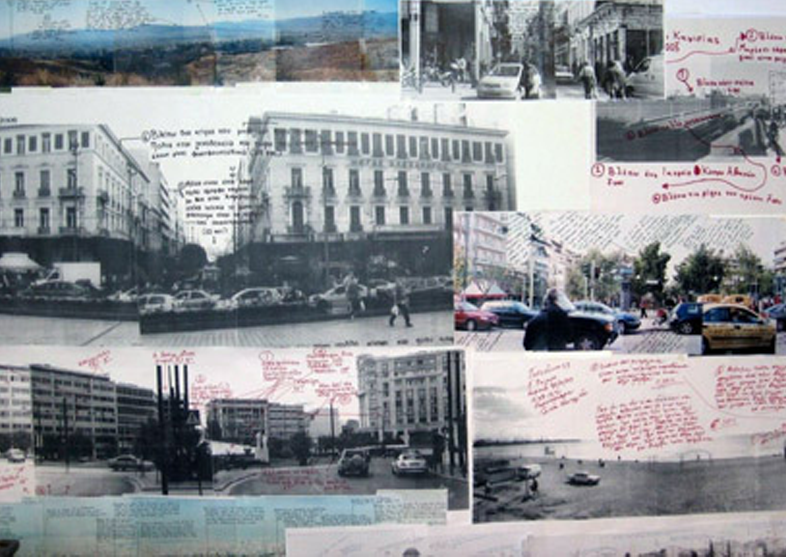France –
In 1930, duck farmer Martin Maurer had a duck-shaped building constructed to house his retail poultry shop in Flanders, a small town on Long Island, New York.
In 1972, Robert Venturi, Denise Scott Brown and Steven Izenour wrote Learning from Las Vegas, a book in which they examined the concepts of vernacular, functional and commercial architecture. They identified two main kinds of buildings: the ‘Decorated Shed’ and the ‘Duck’. Directly referring to the Flanders’s building, a Duck is an architecture taking a form which fully expresses its functional or commercial content.
In 2014, Olivier Cablat reactivated the Venturi’s concept by compiling archives made up of his own photographs, digitalised publications and pictures from the Internet. Those digital archives are the basis of ‘DUCK, A Theory of Evolution’, a genealogical study of the Duck and its evolution towards mobile forms that have more or less strayed from the original concept.
The project is also a reflection on the relationship between a work and the forms it can take. And the most significant of the forms taken by the project is a construction made solely from images and informations collected on the Internet. By covering all the angle of the original building, 10 touristic found pictures were used to re-create the previously unrealized plan of the building.
Then it was possible to create a teleported version of the DUCK, 81% size of the original building, only with a few dust of material found on the internet.
Art & Culture Feature- Oliver Cablat‘s DUCK was published by RVB Books, Paris.
